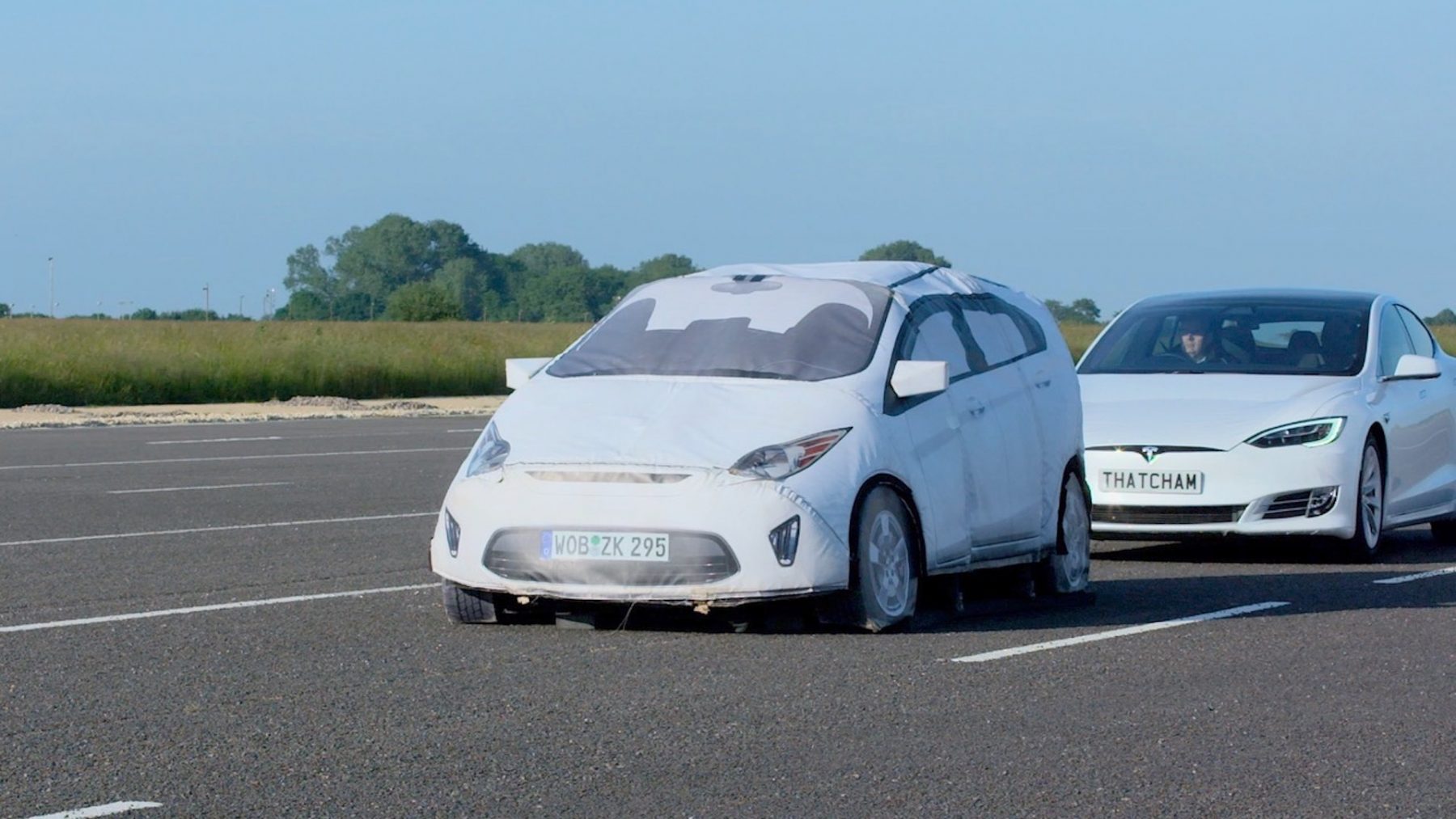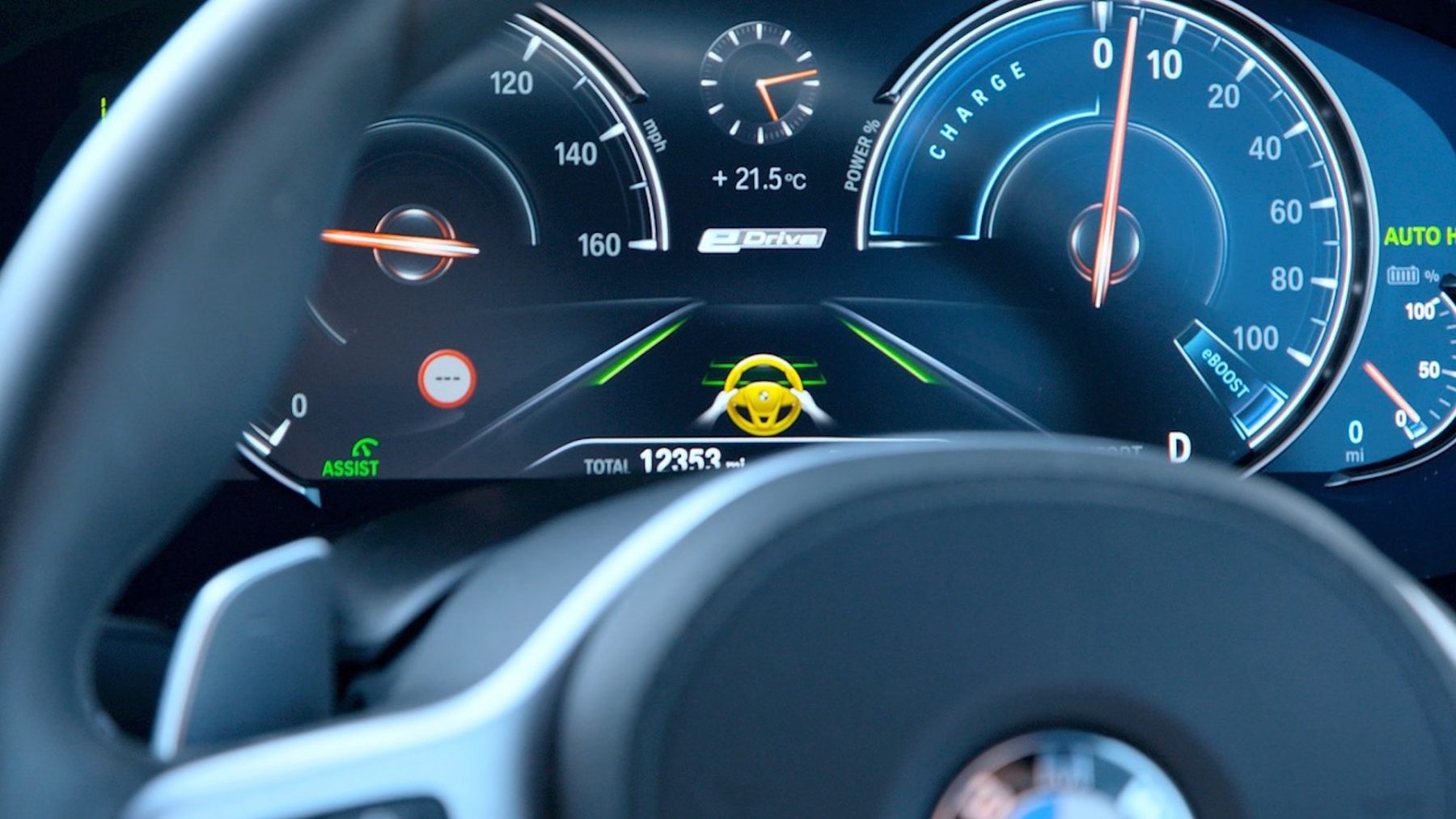Autonomous cars are coming. As exciting and/or terrifying as it may sound, there’s a good chance that in the future we’ll all be carting around in driverless vehicles.
It may sound like an age away, but driverless technology has made leaps and bounds over the past few years and we’re seemingly getting very close to just hopping into a car that can take us anywhere, all by itself. At least, that’s what manufacturers will want you to think.
“The technology is in advance of what the consumer understands and what the laws allow you to do,” Matthew Avery, director of insurance research at vehicle research firm Thatcham Research, tells us. We’ve been invited down to Thatcham’s test centre to experience first-hand some of the misconceptions of today’s ‘autonomous’ technology.
The firm, along with the Association of British Insurers, is urging manufacturers to deliver more clarity on what constitutes a driverless feature and a driving assistance feature.

“Manufacturers advertising self-driving cars in their literature isn’t a good thing” Avery continued, “I think the consumer needs to be brought in clearly step-by-step.”
Our first practical demonstration brought us to the passenger seat of a Tesla Model S 75D — perhaps the car most known for its ‘autonomous’ capabilities today. Just before setting off with its Autopilot mode in full swing, we’re alerted to the firm’s advertising of the feature online.
‘Full Self-Driving Capability’ reads the headline, with the promise of the car being able to match speed to traffic, automatically change lanes and self-park — among others.
“It asks me once to put my hands on the wheel, and that’s it for the rest of the journey” states Avery as we reach a faux motorway laid out on the runway in Autopilot mode — and a quick glance over to the dashboard proves he isn’t wrong.
An important safety message from @ThatchamRsrch expert Matthew Avery. @EuroNCAP will have more to say on the future of autonomous driving technology later this year. #forsafercars #AVs #AutonomousVehicles #autonomousdriving pic.twitter.com/PYYKiW4Vkd
— Euro NCAP (@EuroNCAP) June 12, 2018
It is worth mentioning Tesla insists that buyers are clearly told how Autopilot functions, and are reminded of their responsibility to pay attention when using the system. A Tesla spokesperson said: “The feedback that we get from our customers shows that they have a very clear understanding of what Autopilot is, how to properly use it, and what features it consists of.
“When using Autopilot, drivers are continuously reminded of their responsibility to keep their hands on the wheel and maintain control of the vehicle at all times. This is designed to prevent driver misuse and is among the strongest driver-misuse safeguards of any kind on the road today. Tesla has always been clear that Autopilot doesn’t make the car impervious to all accidents and the issues described by Thatcham won’t be a problem for drivers using Autopilot correctly.”
Expectedly, the Tesla easily navigates itself between the clear white lines ahead of us — even when encountering a slight bend — but the big problem arises when those lines come to a sudden stop.
Lost, it tries to pick out a path to follow on the blank tarmac ahead of us before letting go and bringing itself to a gentle stop — but not without a rather jolty ride along the way.

“We like that it brings itself to a stop — what we don’t like is that it hasn’t observed any input during the process, putting a potentially distracted driver and those around at risk,” Avery said, more calmly on this runway than likely would’ve been the case on a busy public highway.
It’s not only Tesla with this sort of issue, though. In fact, what was up next proved to be much more dangerous.
We hop into a BMW 530e fitted with ‘Driver Assist Plus’, which the German manufacturer describing it as offering “partially autonomous driving” — ‘partially’ proving the keyword.
“It’s better than the Tesla in that it asks every 15 seconds if my hands are on the wheel, but it’ll take any movement — so I only have to give the wheel a wiggle” mentioned Avery, once again in the driver’s seat.
Spent the day with @ThatchamRsrch discussing the misconceptions of today's autonomous technology — along with a pretty good seat for a demonstration pic.twitter.com/6Ab3lOnpiw
— Ryan Hirons (@RyHirons) June 8, 2018
We approach the same faux motorway as the Tesla — only this time as the car comes to the radius, it continues straight onwards — across the multiple lanes and sends us facing the prospect of hitting a concrete barrier at speed. Or it would have, had we not been on a runway.
Our final exercise for the day started with us being told: “you’ll be safer in the back”. Consider us excited.
So, into the rear of the Tesla, we climbed. We followed behind the BMW with Autopilot enabled, this time showing how it deals with a late lane change from the car in front.
Our first run saw the BMW peel away into the right-hand lane at a good distance from stopped traffic ahead — allowing the Tesla to read a parked car (actually in this case, a soft Ford Fiesta-esque target built to mimic a car) early on, coming to a safe halt behind. A good start, we thought.
Spent the day with @ThatchamRsrch discussing the misconceptions of today's autonomous technology — along with a pretty good seat for a demonstration pic.twitter.com/6Ab3lOnpiw
— Ryan Hirons (@RyHirons) June 8, 2018
We approached the same situation again, only this time the 530e ahead made a very late manoeuvre at speed — one that could happen in the event of a sudden traffic jam. The Model S didn’t have time to read the hazard itself — one that an attentive human could likely pick up beforehand — and despite pre-warning the driver and slamming the brakes on, flew straight into the back of the soft target.
It serves as a stark reminder though that we’re still a long way from a full autonomous future — and just how informed the consumer needs to be on remaining attentive. It’s poor enough happening at a closed course, but had that been on a public road? Chaos.
Full autonomy is coming and with the rate ‘autonomous’ technology on offer today is rapidly improving. For now, though, it’s clear that we’re a while off hopping into a car that we can pay no attention to while in the driver’s seat — and Thatcham’s message to manufacturers on clarity is something to be listened to.

